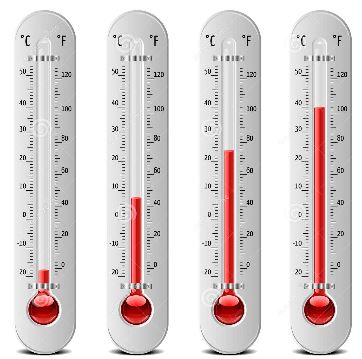 OBJECTIVES:
OBJECTIVES:
·
Discovering
how to use a thermometer
·
Recording
information on temperature.
VOCABULARY:
·
temperature
·
thermometer
MATERIALS:
·
thermometers
(2 types, one to explain (paper one) and one that can be immersed in water
(plastic one)
·
containers of warm and cold water
·
ice cubes
·
worksheet
BACKGROUND:
Thermometers are useful in our everyday life. Students are familiar with
their parents watching the morning news for information on the
temperature. It helps them decide what to dress for the day. Temperature
is a practical thing to know!
Changes in temperature can be felt when any living organisms touches an
ice cube or feels fire burning. It wasn’t until the 17th
century in Italy that meteorology became a science. Galileo
Galilei made the first thermometer around 1600. Gabriel Fahrenheit,
a German instrument maker invented in 1714, put mercury in a glass tube
and created a scale of temperature and called it a thermometer. His name
is still used for the English system of reading temperature. In devising a
scale he used zero as the lowest temperature obtainable with a
mixture of ice and common salt, and first proposed to divide the interval
between this temperature and that which is normally found to characterize
the blood of a healthy man into 12 divisions. In other words, arbitrary
points which had significance in human culture.
The centigrade thermometer, which most countries now use is based
on freezing of water and boiling of water as its end members. Anders
Celsius (1701-1744), a Swede, first proposed the use of the intervals
that are now in wide use on the Centigrade thermometer. The thermometer is
based on 0º for freezing and 100º for boiling of water. Water is used
because of its importance to our everyday lives.
PROCEDURE:
(Duration: 30 minutes)
-
Check thermometers before you start to make
sure they are not broken and can be read easily.
-
Ask students where they would normally measure temperature. Make a list of these
which could include the following: oven, heater temperature,
refrigerator, and fevers.
-
You may want to tell students that the thermometer that is used to
find your body temperature (one you put in your month) is not used to measure ovens or
refrigerators. Thermometers are made to measure different things.
We even have digital thermometers that record temperature.
-
Measuring temperature can be exciting for students. Just to see the
"red" liquid move up and down is somehow magical for children. (Red
liquid in school thermometers is alcohol, mercury thermometers are
banned in most schools.) In this exercise the students use different
containers of water. Students
record on their lab sheets the measured temperature. You will be
measuring in centigrade, but if you have other thermometers you can
still use the worksheet. Have students label the degrees that are on
the thermometer they are using.
PLEASE REMEMBER: even if
the student cannot read have the students draw what they see.
The goal of these lessons will help a kindergarten read a
thermometer by the end of the school year.
-
You may want the students to predict which one is hot and which ones
are cold before they start measuring with the thermometers by putting
their fingers in the cup. We do not suggest using hot boiling water.
-
Tell the students to put the thermometer in the different containers
and watch the red line go up or down. They should record the
information on their lab sheets. On the worksheet there are 2 thermometers that the students can record. You determine what the
students measure. If you want more than 2 stations you may want to
provide students with more worksheets. Remember they are just
copying and not reading.
-
If you have an outside thermometer you should measure the temperature
outside over the next few days. Make sure the measurements are taken
at the same time each day. Talk about which days were coldest, which
were warmest, and which were the most comfortable.
-
You will probably use a glass thermometer for this exercise. Caution the
children to be careful. Do not push the thermometer into anything. But if
a child does break one, tell them to tell you immediately. If the
thermometers are alcohol, they will not cause any damage. In most place
mercury thermometers for elementary age students are prohibited.
